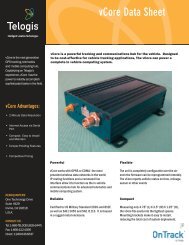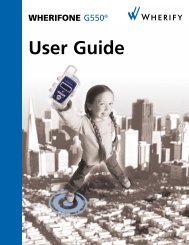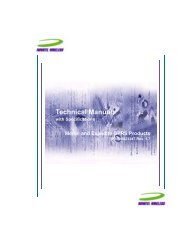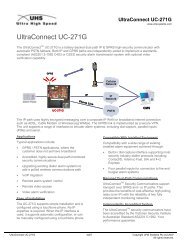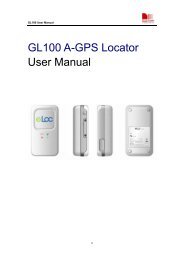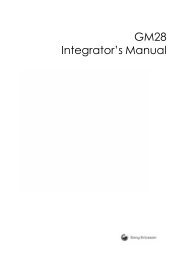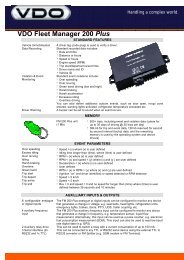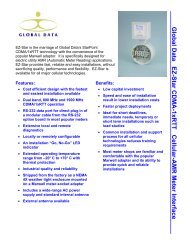Hardware Interface Description - KORE Telematics
Hardware Interface Description - KORE Telematics
Hardware Interface Description - KORE Telematics
Create successful ePaper yourself
Turn your PDF publications into a flip-book with our unique Google optimized e-Paper software.
XT55/56 <strong>Hardware</strong> <strong>Interface</strong> <strong>Description</strong><br />
Confidential / Released<br />
s<br />
6.4.1 Current consumption during GSM transmit burst<br />
The diagrams provided in Figure 46 and Figure 47 illustrate the typical current consumption<br />
of the application caused during a transmit burst. The typical peak current is shown vs. the<br />
power control level for 900 MHz, 1800 MHz and 1900 MHz and vs. the return loss of the<br />
antenna.<br />
Test conditions: All measurements have been performed at T amb = 25°C, V GSM_BATT+ nom = 4.1V.<br />
Reference points for measuring the voltage are the GSM_BATT+ and GND test points on the<br />
back side of the module. The curves are for one TX slot (for example a voice call, CSD call<br />
or Class 8 GPRS). Curves for Class 10 GPRS activities (2 TX slots) are shown too.<br />
Changing the conditions, e.g. in terms of temperature or voltage, will cause different results.<br />
Average Current GSM900 (V BATT+ =4.1V)<br />
0.5<br />
0.45<br />
0.4<br />
0.35<br />
0.43<br />
1 TX - Average Current<br />
2 TX - Average Current<br />
Current (Amps)<br />
0.3<br />
0.25<br />
0.2<br />
0.25<br />
0.33<br />
0.21<br />
0.23<br />
0.15<br />
0.1<br />
0.15<br />
0.16<br />
0.11<br />
0.14<br />
0.10<br />
0.13<br />
0.10<br />
0.05<br />
0<br />
5 7 9 11 13 15 17 19<br />
Power Control Level<br />
Figure 41: Typical current consumption vs. return loss in EGSM 900 network<br />
XT55/56_hd_v02.06a Page 97 of 125 17.12.2004



